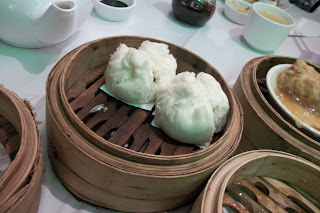
Ingredients: Could be all sorts of different things, but generally the dishes flow from one to another. In this case, I’ll be discussing a tasting menu I had at a fabulous nontraditional Italian restaurant in Boston. A quick note, nothing at this restaurant has ever failed me and I deeply trust the Chef to make things I would never eat absolutely delicious. Dishes on this menu included a duck egg soufflé with a poached duck egg in the center and white truffle slices on top (extremely expensive, rare mushroom they use pigs in Italy to find), smoked salmon on endive (a kind of lettuce) with a citrus sauce, scallops on the half shell (like the actual shell the scallops make a living opening and closing), gnocchi (in this case a half-moon shaped pasta pocket) stuffed with dried cherries and chocolate and atop a pork blood reduction sauce that ended up tasting like chocolate, two wild boar (pork) chops, and for dessert a pine nut panna cotta (an Italian cooked cream). I also ordered a homemade cola, which was a blend of coffee, caramel, sassafras, and other cola flavors.
Character: Taking these one at a time… The duck egg soufflé is the consistency of whipped cream (lacking any better comparison) and is warmed with a slightly cooked egg in the middle. It tastes very much like a normal chicken egg to me. The truffles are very delicate and have a very earthy flavor – these are like $40 for a shaving of a mushroom (like a penny size), so enjoy! The smoked salmon tasted to me like smoked salmon (which I’m still not convinced I’ll ever like) – roughly the consistency of soft ham; the citrus sauce on this helped to give it some pep. The scallops are the consistency of a moist chicken breast and had a bit of a briny/salty flavor from in the shell they live in, as well as a bit of a smoky flavor they picked up from the preparation. The gnocchi is a pillow soft pocket of pasta, similar to a ravioli but the pasta itself is a bit fluffier and doughier, and the stuffing was very rich – like a cherry cordial. The sauce for the gnocchi, despite it having no chocolate in it, tastes like chocolate with a bit of rich saltiness from the pork blood (complementing the pasta well) and has the consistency of a chocolate syrup. The wild boar pork chops are a blend between a lamp chop and a pork chop in both consistency and flavor. And the panna cotta is the consistency of a very squishy cheesecake or a custard and tastes heavily of cream, and had pine nut flavors within it. By the way, each of these dishes came with a unique wine pairing that was really fun to try in conjunction with the food. Of everything, I absolutely adored a white Nebiolo wine that I would never have thought existed. Lest I digress into a wine post, it was amazing! I came home and Googled where to get that… and of course, it’s practically impossible. Still fun to try!
What I thought: So, I had a million reasons to think the majority of this menu would be gross – duck eggs, pork blood, scallops in a shell, really? But, surprisingly, and thanks to the Chef, the majority of this menu was not only not gross, but actually enjoyable. I enjoyed trying the homemade soda, which was pretty different from a normal coke – it had much more coffee flavor and the richness from the sassafras. I don’t think I’ll ever be a huge fan of soufflés, but I can appreciate what went into this one. Something about the texture and the flavor throws me off. Similarly, panna cotta and I don’t really get along – again it’s a texture and flavor issue. But, I really enjoyed the scallops. They were so flavorful and had a chewy texture, but not so chewy that I couldn’t savor them and enjoy. I also enjoyed the wild boar chops. I like lamb chops anyway (similar in a few ways) and these had a good smoky and salty flavor and strong meaty texture – really good. And the gnocchi, which I normally don’t really care for, was delicious. Luckily I forgot about the ingredients for the sauce long enough to finish half the dish before I was reminded I was eating a pork blood reduction… I kinda wanted to die right then, but thought better of it because I’d actually eaten and enjoyed half of it unknowingly and it hit me that maybe that was okay. The texture of the sauce was like a runny chocolate sauce, and the flavor was really complex but included chocolate overtures and hints of deep red wine and saltiness – all of the flavors blended really well to be multi-dimensional and give even more depth and a bit of zing to the flavors in the pasta. Eating this dish was kind of a breakthrough. I would’ve been sure blood would be in my top 5 of must be gross foods, but I stand corrected. Just goes to show that sometimes going out on a limb can offer great payoffs.
Overall, I’m happy I could put my trust in a very capable chef that I knew sought to delight me with his menu. I don’t do this all the time, but it’s a great example of trying scary things in the best possible places (one of my tips/rules to live by). I had a great time and expanded my horizons, too.
















